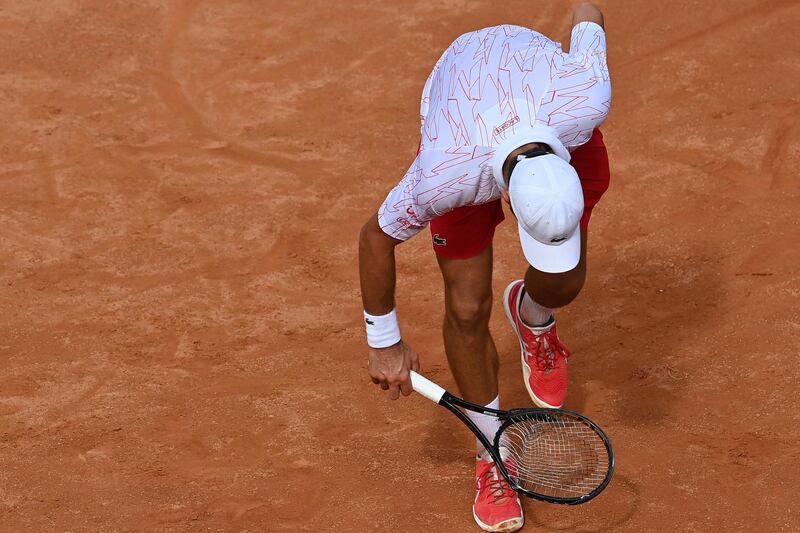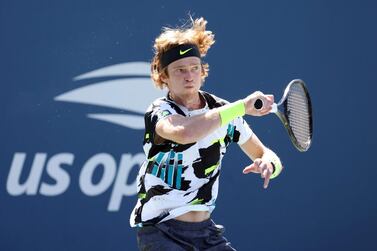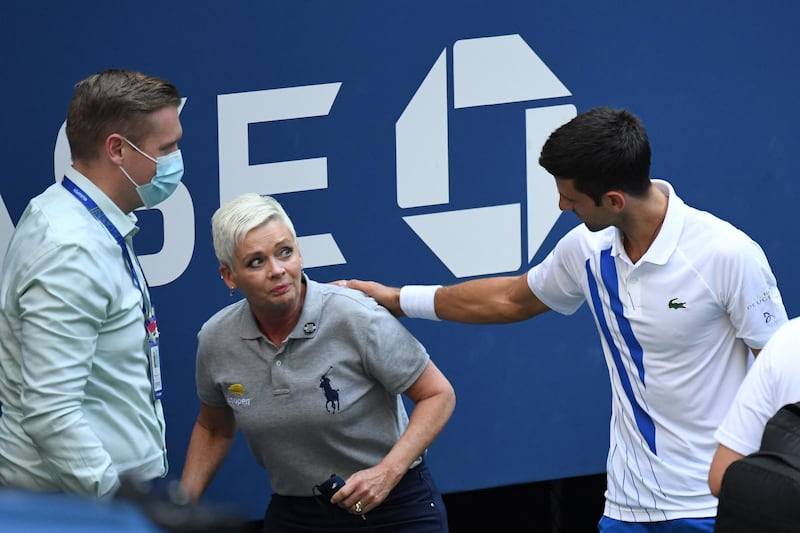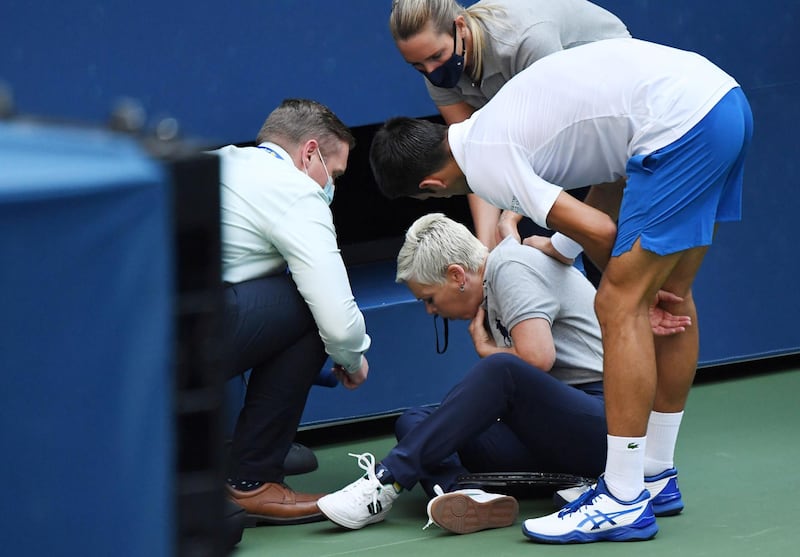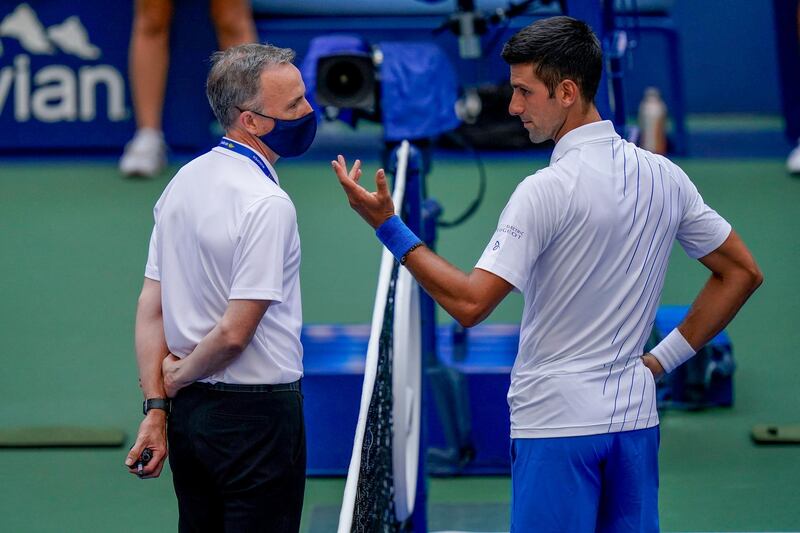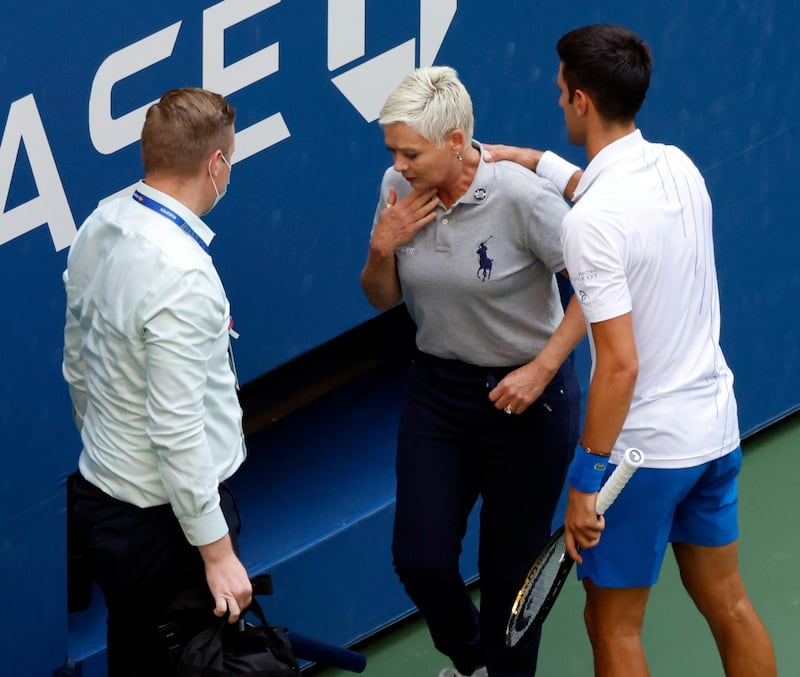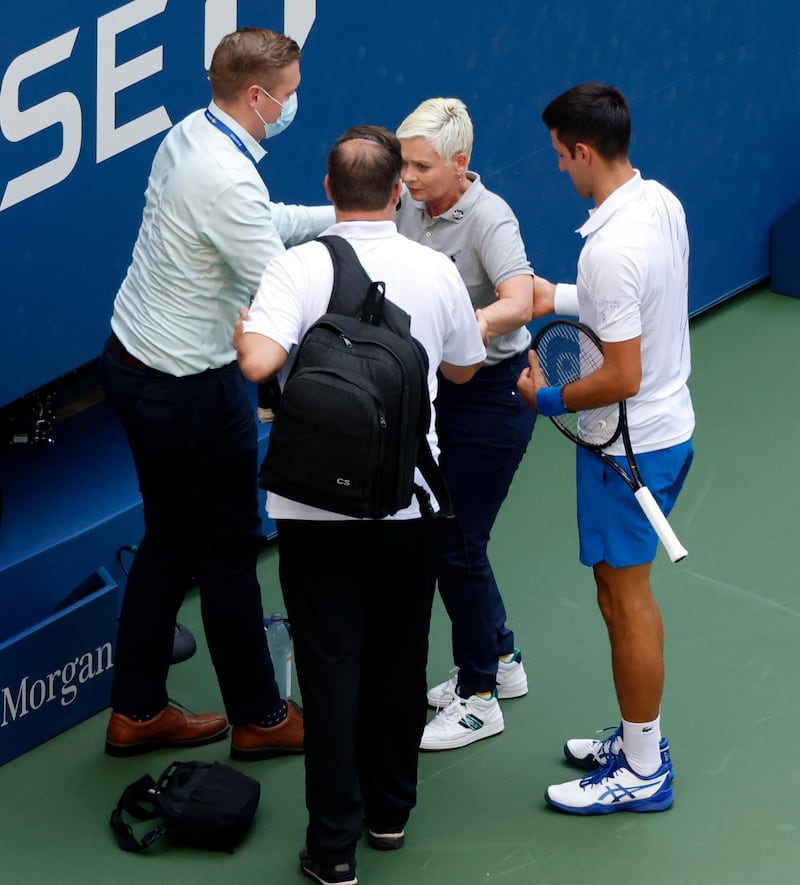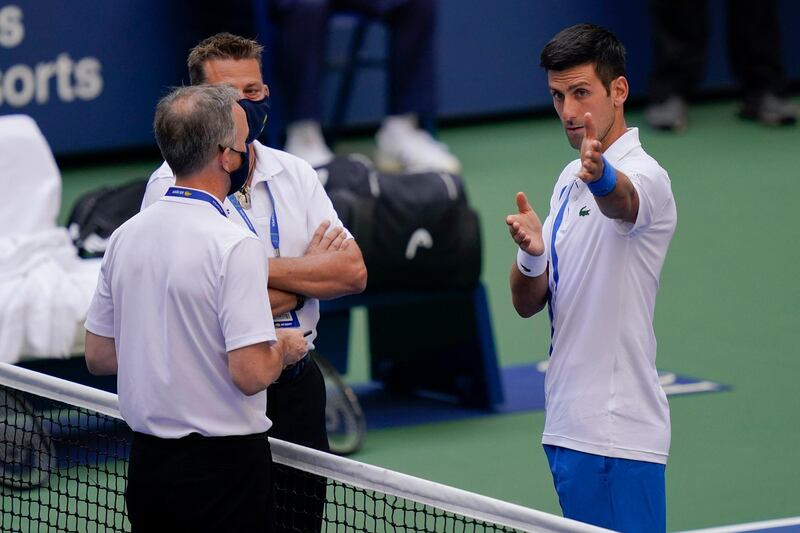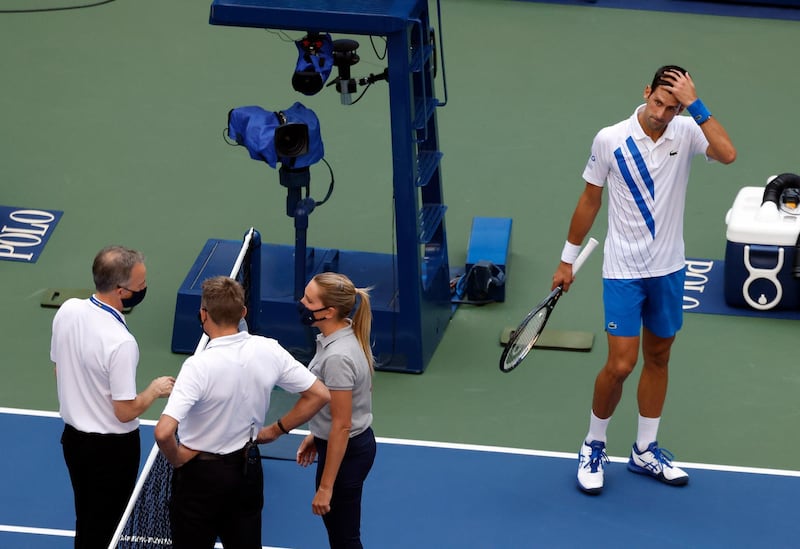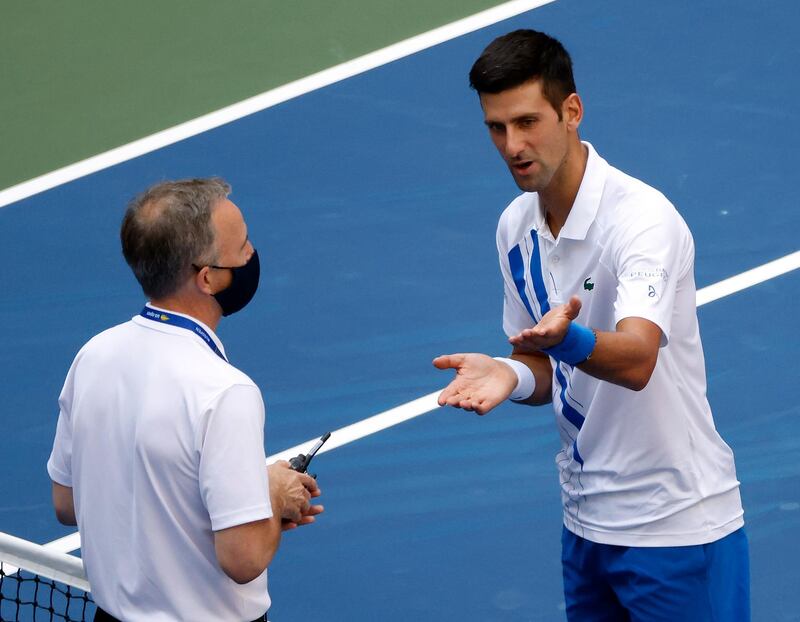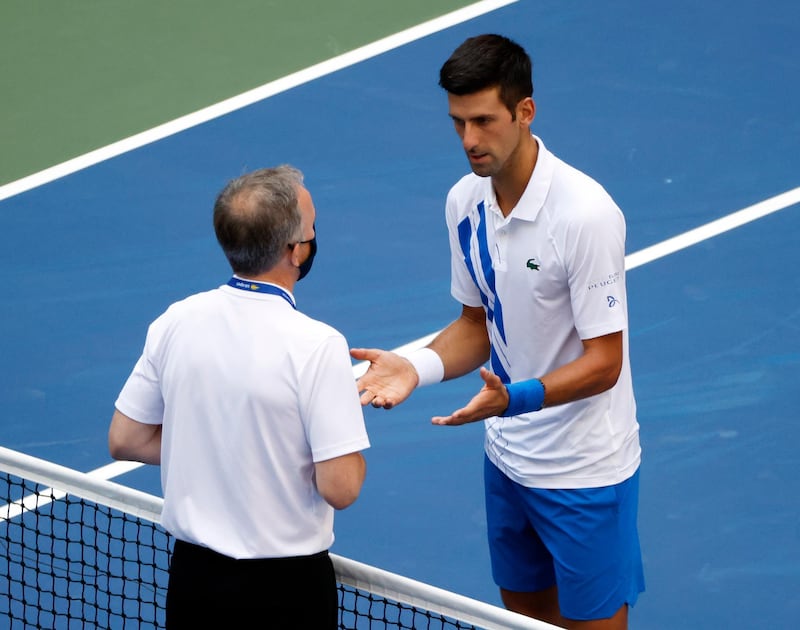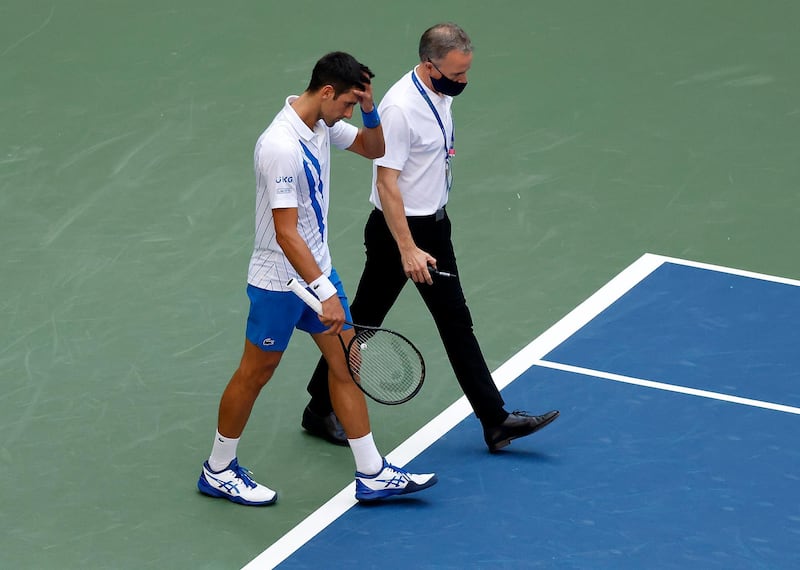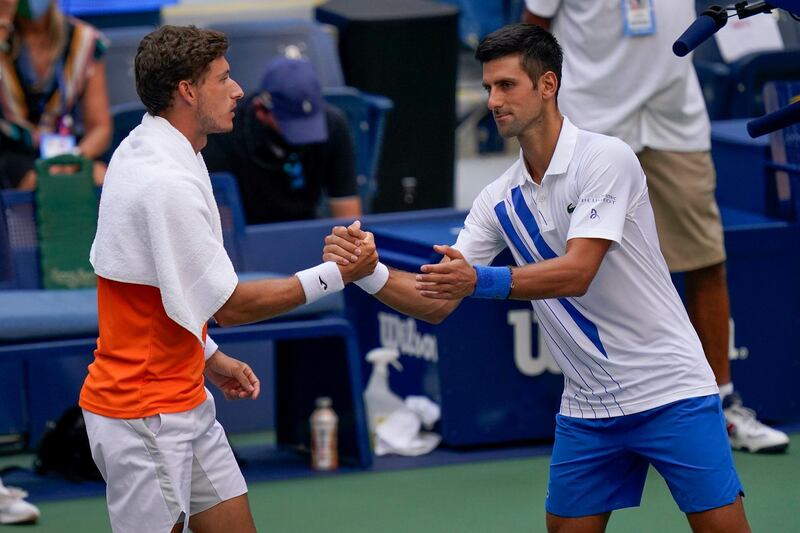It’s not easy to come out of the worst week of your professional tennis career, step back on court just a few days later, and win an historic Masters 1000 event.
But that's exactly what Novak Djokovic has managed to pull off this past week in Rome, shortly after getting defaulted at the US Open for accidentally hitting a line judge with a ball.
A serious mistake and a great deal of bad luck abruptly ended Djokovic’s shot at an 18th Grand Slam title in New York.
The world No 1 has been open about the whole experience while talking in Rome, admitting it was an incident he will never forget but he’s also adamant about moving on.
“I understand that I have outbursts, and this is kind of the personality and the player that I have always been,” he said.
“Obviously went through ups and downs in my career, managing to control my emotions. But you're alone out there. It's a lot of intensity and a lot of pressure. You have to deal with all of that; so sometimes situations like this happen.”
What Djokovic is describing is nothing new in tennis. The sport has a unique gladiatorial element to it, pitting two players against each other with zero help from anyone around you. You cannot even speak to your coach during a match.
Players handle that pressure in various ways. Some spend the entire match shouting self-loathing monologues at themselves or towards their box, à la Andy Murray; others abandon any sense of restraint like Nick Kyrgios or Benoit Paire, while some internalise it all and still manage to win. But the majority of players have, at one point or another, tossed a racquet or a ball in anger, with little consideration to the consequences.
Should the players pay more attention to the possible consequences? Absolutely. Is it a terrible example for kids watching? It certainly is, and Djokovic, and his peers, are well aware of that. But is this exclusively a “Djokovic problem” and should he suddenly be painted as this volatile player with “anger issues”? Of course not.
The narrative being spun over the last week in Rome surrounding the Serb and his behaviour on court has been wild. After he smashed his racquet and got a code violation during his three-set quarter-final win over Dominik Koepfer in Rome, the headline was, “Djokovic has another outburst on court”.
When he had a heated argument with the chair umpire and received a code for audible obscenity during his semi-final victory over Casper Ruud, the headline was similarly, “Djokovic gets angry again”.
______________
When Djokovic defaulted
It is understandable that the public is paying extra attention to Djokovic’s demeanour on court since he got defaulted at the US Open, but tracking every code violation and focusing every storyline on it is ignoring the fact that this is a common occurrence in tennis.
Even someone as reserved as Karolina Pliskova lost her cool in Rome before and smashed her racquet against the umpire’s chair, leaving a hole in the side of it.
In a match against Roger Federer in Dubai in 2017, Paire angrily threw his racquet against the backboard of the court. It bounced off the wall but thankfully did not hit anyone.
“Yeah, it was funny, actually. He got lucky,” Federer said afterwards. The Swiss laughed it off because he sees it so often, and isn’t immune to it either.
“Players know what the consequences are,” Federer added. “He knew that if he smashed one more racquet it would be a point penalty and then it goes into game quickly, and things get really serious and expensive and all that.
“Sure, you have to be careful. When you whack a ball out of the stadiums, you want to be 100 per cent sure you clear everything in the path, even birds and stuff. If you throw the racquet, you want to know how it bounces. And if it's the unknown, you shouldn't do it.”
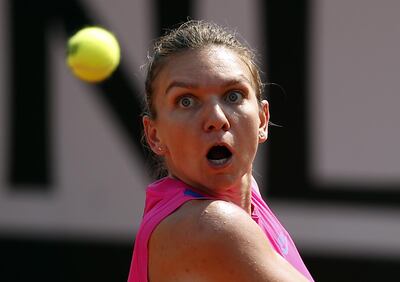
That “shouldn’t do it” part is easier said than done. Djokovic says he is constantly working on controlling his emotions better during matches. Murray says he has spent years trying to figure out why he gets this angry with himself on court.
Attitude on court is often a career-long work-in-progress. Simona Halep had to lose her coach Darren Cahill for a while to work on her attitude before he agreed to reunite with her. That particular case was more about bringing her best fighting spirit to the court, and it wasn’t about anger, but it is all connected. When you’re in a high-pressure situation, it is not always easy to summon your best behaviour or your inner warrior on demand.
Halep saw what happened to Djokovic at the US Open and says it was a helpful warning for her.
“Definitely. I was, like, ‘whoa’. We have to really be careful because people are around us. We don't have to react that bad during the matches, because it's just a tennis match,” said the Romanian two-time major champion.
Players should be more careful, and should do everything possible to stop themselves from tossing racquets and balls in anger during a match. That’s an undeniable fact. But singling out Djokovic and pretending he is the sole repeat offender is ridiculous.
“It's definitely not the best message out there, especially for the young tennis players looking at me. I don't encourage that, definitely,” Djokovic said.
“But, look, we're all people. We all do our best. There were times and periods when I don't do that, and there are sometimes periods when I do. It's unpredictable really in life what can happen.”
